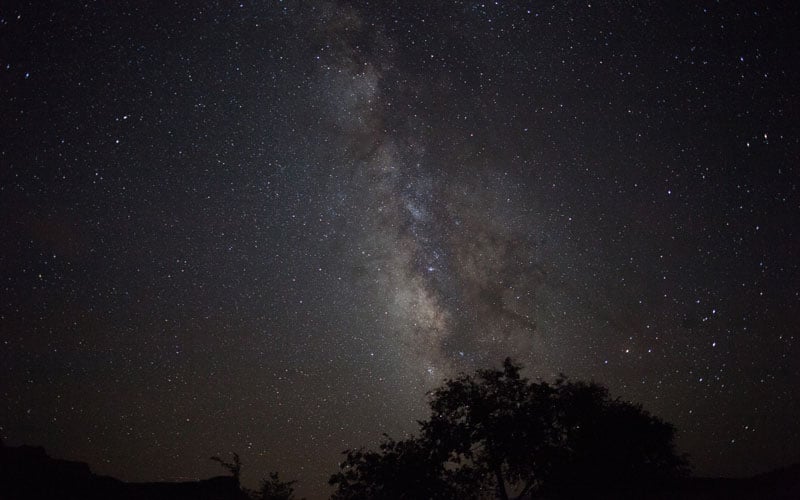
The many lights in downtown Phoenix contribute to the area’s light pollution at night. (Photo by Alan Stark via Flickr/Creative Commons)

The Milky Way galaxy’s stars and Great Rift are visible in Arizona’s Marble Canyon. (Photo courtesy of Richard via Flickr/Creative Commons)
Editor’s note: FYI is an ongoing series of feature stories by Cronkite News digital production bureau students that help explain various issues that impact the Valley.
TUCSON – Look up at the sky once the sun goes down. How many stars do you see?
If you live in a city or suburb, you probably see very few. That’s because of light pollution, the brightening of the night sky due to excessive use of lighting. The Tucson-based International Dark Sky Association has combatted it for nearly 30 years.
One of the ways the organization tries to diminish light pollution is through its International Dark Sky Places program, which designates certain areas with low light pollution and efficient outdoor lighting. When you gaze at the night sky inside an international dark sky place, you can see much more of Milky Way than you could see in many cities.
So far, the association has recognized 52 places around the world as international dark sky places. Four out of Arizona’s five international dark sky places were designated as such between 2014 and 2015.
The fifth — Flagstaff — was the first designated dark sky place, named in 2001.
Interactive Map
Five of the International Dark Sky Association’s 52 designated international dark sky places are located in Arizona. View an interactive map of Arizona’s international dark sky places and learn more about them.
“[Flagstaff’s] efforts have very definitely inspired other people in the state,” said John Barentine, International Dark Sky Association program manager and a native of Phoenix. “It inspired Sedona. In turn, some of the people in Sedona are now working to designate the Village of Oak Creek.”
The recent spike of international dark sky place designations in the state has created a snowball effect. Barentine said applications for International Dark Sky Place designations have been submitted for the Village of Oak Creek and Kartchner Caverns, while an application for Slide Rock State Park was started in September.
A decision on Village of Oak Creek and Kartchner Caverns should be made by early February.
“Programs like the International Dark Sky Places Program and getting the award for Kartchner Caverns help us to raise public awareness about the importance of preserving the night sky and limiting light pollution,” said Bob Gent, a volunteer Arizona State Park research, and inventory and monitoring astronomer who is spearheading Kartchner Caverns’ application. Gent is also a past president of the International Dark Sky Association’s board of directors.
Barentine said he believes that public awareness of the issue is increasing in Arizona, attributing it partly to the state’s relationship with astronomy. The Arizona Commerce Authority estimates that the state’s most recent advancements in astronomy research generated $252 billion and 3,330 jobs for the state. The University of Arizona recently contributed to the discovery of liquid water on Mars.
“We have this well-established and very mature industry in this state that needs dark conditions to really thrive, and it’s under direct threat,” Barentine said.
Gent acknowledged that the excessive night lighting in large cities has enabled people to do more activities there once the sun goes down. But that light pollution obscures the brilliant stars in the night skies and causes other consequences.
“When I was a boy – I grew up in Phoenix – you could walk outside in my backyard and … look up and see the Milky Way,” he said. “That’s long gone now.”
People who want to make a difference in reducing light pollution should use lighting products that have the International Dark Sky Association’s seal of approval on them, Barentine advised. Speaking to government officials about reducing light pollution also helps.
“I think once they’re aware of the problem of light pollution, that will lead them to make better decisions,” he said.